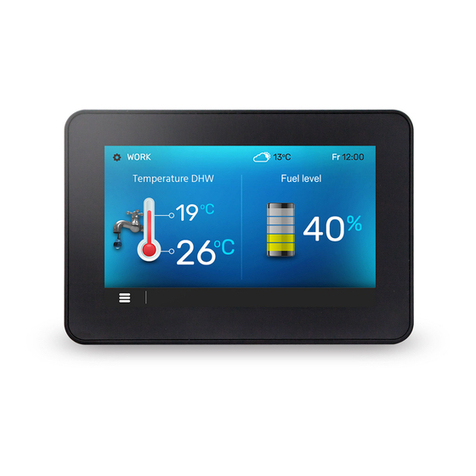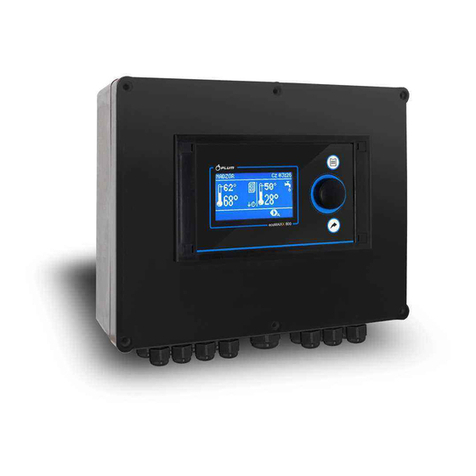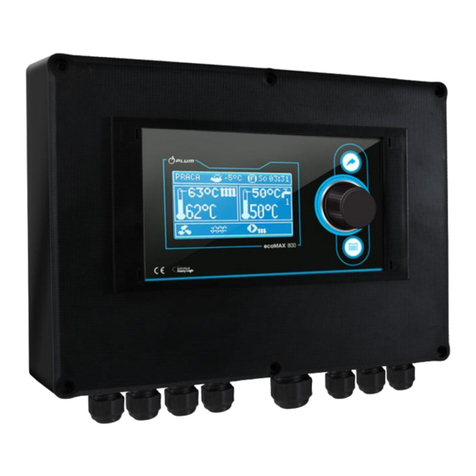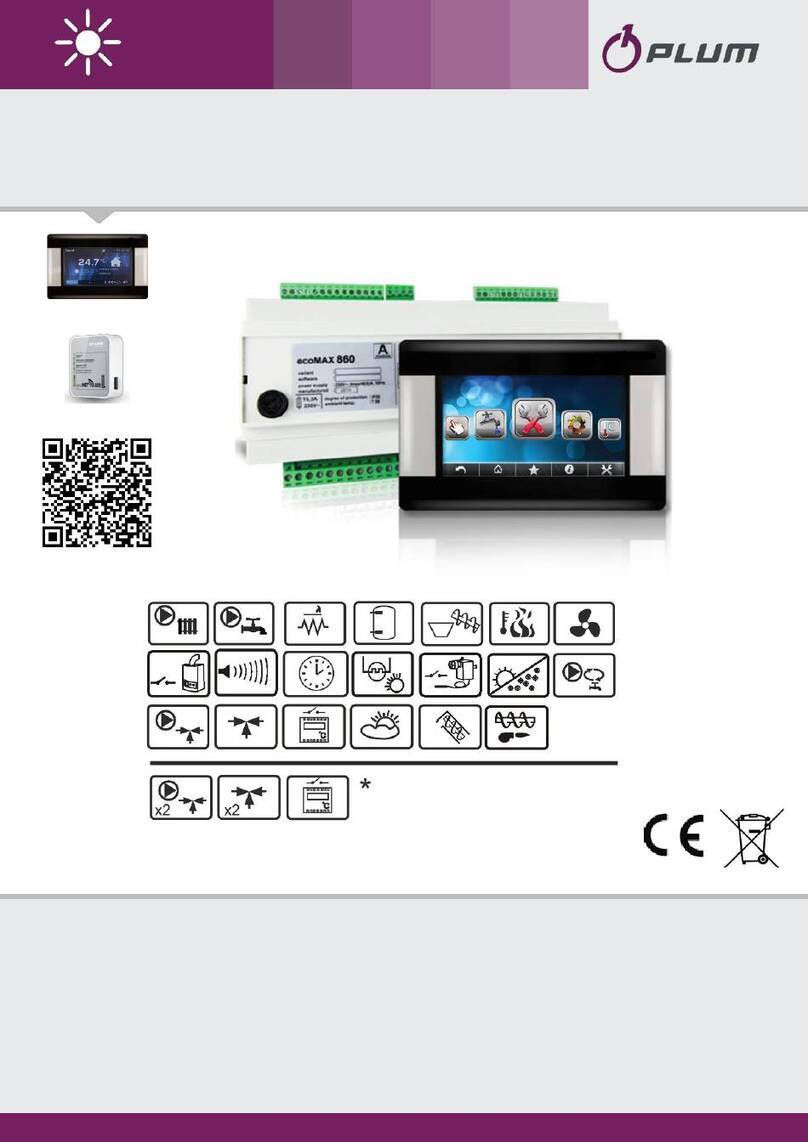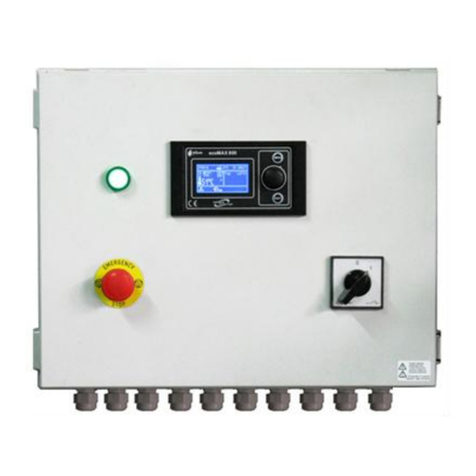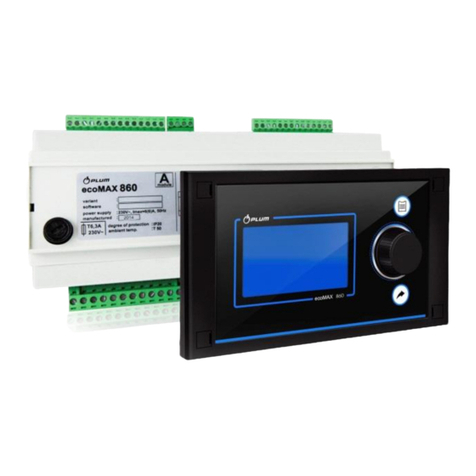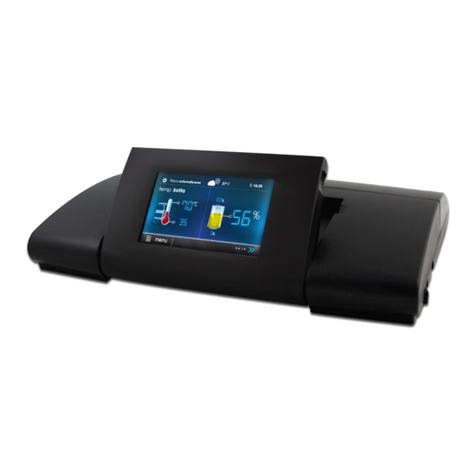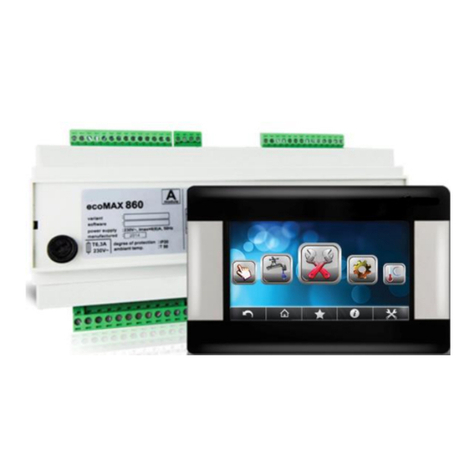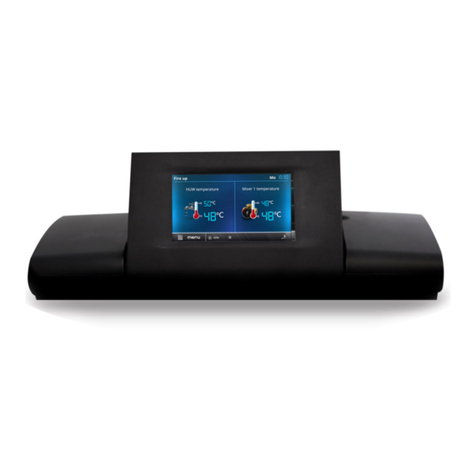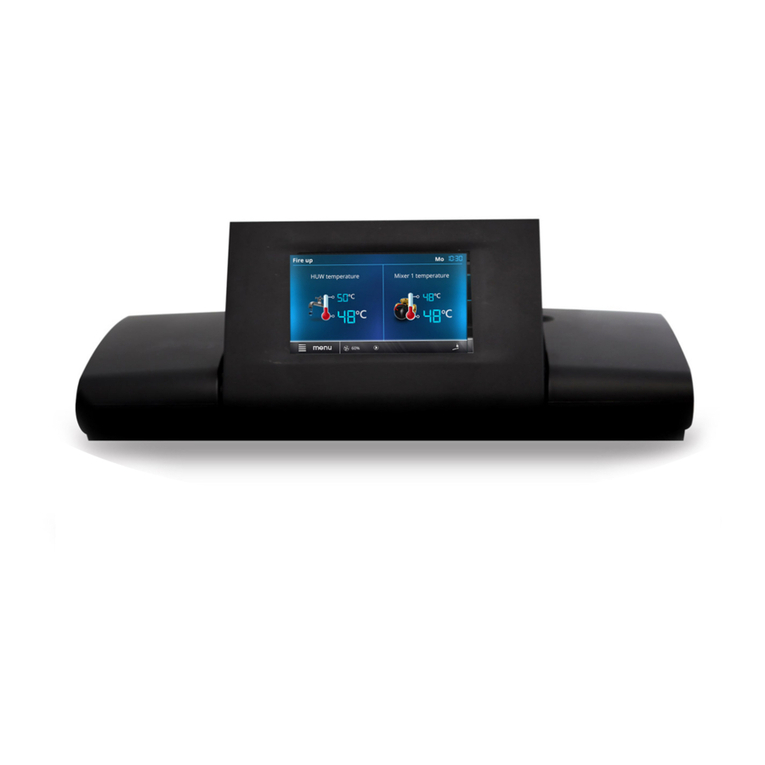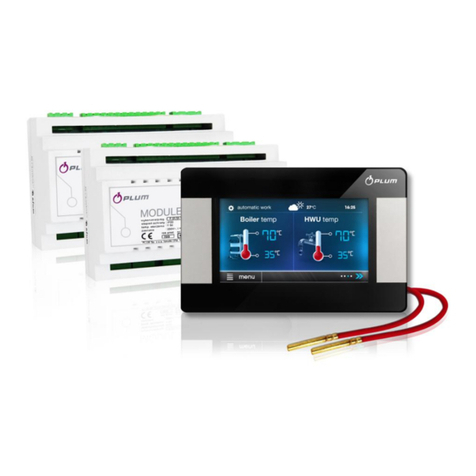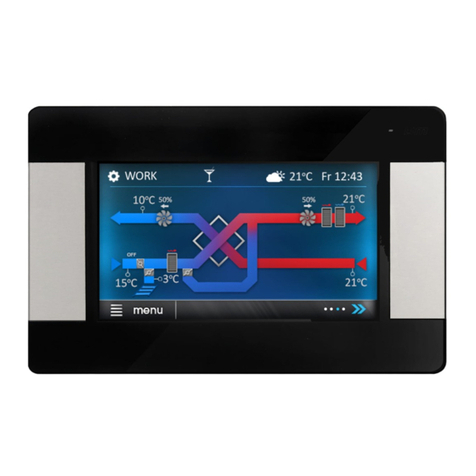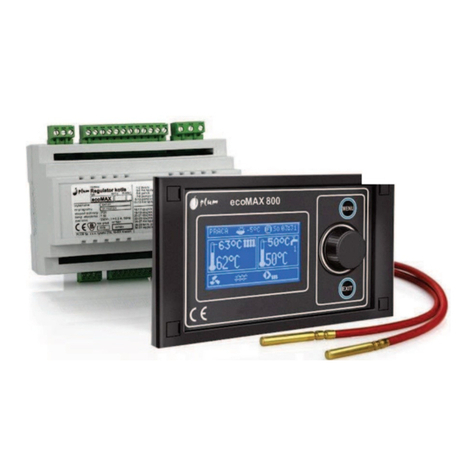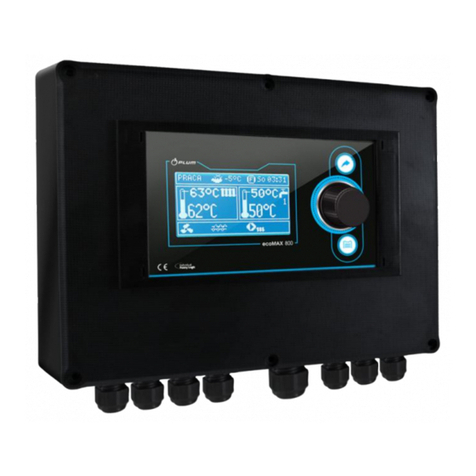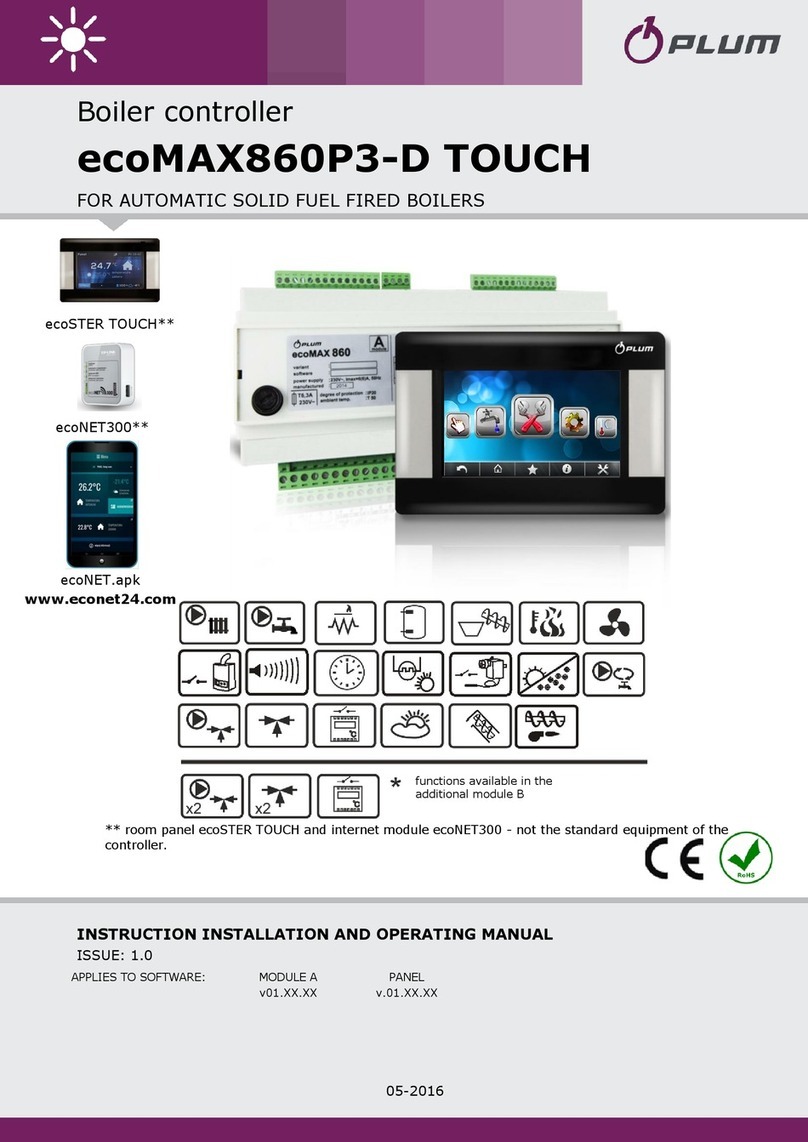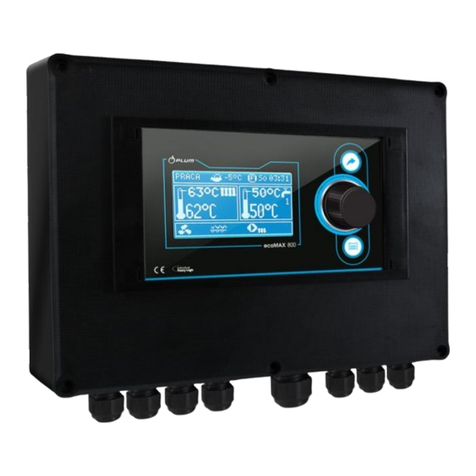
3
TABLE OF CONTENTS
1RECOMMENDATIONS REGARDING SAFETY ........ 4
2GENERAL INFORMATION .................................... 5
3INFORMATION ABOUT DOCUMENTATION......... 5
4STORAGE OF DOCUMENTATION......................... 5
5APPLIED SYMBOLS .............................................. 5
6DIRECTIVE WEEE 2012/19/UE............................. 5
USER SETTINGS ............................................ 7
7USER MENU - STRUCTURE .................................. 8
8THE CONTROLLER SUPPORT ............................... 9
8.1 BUTTONS DESCRIPTION......................................... 9
8.2 DESCRIPTION OF THE MAIN WINDOW....................... 9
8.3 THE CONTROLLER START UP.................................. 10
8.4 PRESET TEMPERATURE SETTING ............................ 10
8.5 FIRE UP MODE ................................................. 10
8.6 OPERATION MODE .......................................... 10
8.7 REGULATION MODES .......................................... 10
8.8 SUPERVISION MODE ....................................... 11
8.9 BURNING OFF MODE....................................... 12
8.10 STOP MODE..................................................... 12
8.11 GRATE ........................................................... 12
8.12 BURNER CLEANING............................................. 12
8.13 HUW SETTINGS................................................. 12
8.14 HUW PRESET TEMPERATURE SETTINGS .................. 13
8.15 HYSTERESIS OF HUW......................................... 13
8.16 SUMMER FUNCTION START UP ........................... 13
8.17 HUW CONTAINER DISINFECTION........................... 13
8.18 MIXER CIRCLE SETTINGS ...................................... 13
8.19 WEATHER CONTROL ........................................... 14
8.20 NIGHT DECREASE SETTINGS DESCRIPTION ................ 15
8.21 WORKING ACCORDING TO SCHEDULE ..................... 15
8.22 CIRCULAR PUMP CONTROL................................... 15
8.23 FUEL LEVEL CONFIGURATION ................................ 16
8.24 FEEDER TEST ..................................................... 16
8.25 INFORMATION................................................... 16
8.26 MANUAL CONTROL ............................................ 17
8.27 COOPERATION WITH ROOM PANEL ........................ 17
8.28 COOPERATION WITH THE INTERNET MODULE........... 17
INSTALLATION AND SERVICE SETTINGS....... 19
9HYDRAULIC SCHEMES ....................................... 20
10 TECHNICAL DATA .............................................. 23
11 CONDITIONS OF STORAGE AND TRANSPORT ... 23
12 CONTROLLER INSTALLATION ............................ 23
12.1 ENVIRONMENTAL CONDITIONS ............................. 23
12.2 INSTALLATION REQUIREMENTS.............................. 23
12.3 INSTALLATION OF CONTROL PANEL......................... 23
12.4MOUNTING OF MODULE...................................... 24
12.5 IP PROTECTION RATE .......................................... 25
12.6 CONNECTING ELECTRICAL SYSTEM ......................... 25
12.7 ELECTRIC SCHEME .............................................. 27
12.8 CONNECTION OF TEMPERATURE SENSORS ............... 29
12.9 CONNECTION OF WEATHER TEMPERATURE SENSOR... 29
12.10 CONNECTION OF EXHAUST TEMPERATURE SENSOR.... 29
12.11 TEMPERATURE SENSORS CHECKING........................ 30
12.12 CONNECTION OF OPTICAL SENSOR ......................... 30
12.13 CONNECTION OF MIXERS ROOM TEMPERATURE........ 30
12.14 CONNECTION OF BOILER ROOM THERMOSTAT ..........31
12.15 CONNECTION OF RESERVE BOILER ..........................31
12.16 CONNECTION OF ALARM SIGNALING .......................32
12.17 CONNECTINO OF MIXER SERVO..............................32
12.18 CONNECTION OF STB TEMPERATURE LIMITER ..........33
12.19 CONNECTION OF ROOM PANEL..............................33
13 SERVICE MENU –STRUCTURE ...........................34
14 DESCRIPTION OF SERVICE PARAMETERS...........36
14.1 BURNER ...........................................................36
14.2 BOILER .............................................................37
14.3 CH AND HUW ..................................................38
14.4 BUFFER ............................................................38
14.5 MIXER..............................................................38
14.6 OTHER PARAMETERS ...........................................39
15 ALARMS DESCRIPTIONS.....................................40
15.1 BOILER MAX.TEMP.EXCEEDING ............................40
15.2 BURNER MAX.TEMP.EXCEEDING...........................40
15.3 BOILER TEMP.SENSOR DAMAGE ............................40
15.4 FEEDER TEMP.SENSOR DAMAGE............................40
15.5 FEEDER CONTROL SYSTEM FAILURE.........................40
15.6 OVERHEATING BOILER,STB OPEN CONTACT ............40
15.7 NO COMMUNICATION .........................................40
15.8 FIRING UP FAILED ATTEMPT ..................................41
15.9 BOILER DOOR OR FUEL TANK FLAP OPEN..................41
15.10 UNSUCCESSFUL ATTEMPT TO LOAD THE TANK...........41
16 OTHER CONTROLLER FUNCTIONS .....................41
16.1 POWER STOPPAGE..............................................41
16.2 ANTIFREEZING PROTECTION..................................41
16.3 PUMP ANTISTANDSTILL FUNCTION..........................41
17 REPLACEMENT OF PARTS AND SUBASSEMBLIES
41
17.1 NETWORK FUSE REPLACEMENT..............................41
17.2 REPLACEMENT OF CONTROL PANEL ........................41
18 LAMBDA SENSOR...............................................42
19 THE CONTROLLER CONFIGURATION BY BOILER
PRODUCER.....................................................................42
20 POSSIBLE FAULTS DESCRIPTION ........................43
